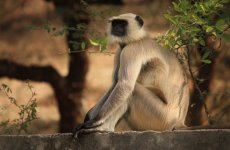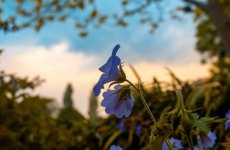Every year seed banks offer newer and newer genetics to the market, adding more drops to the immeasurable ocean of flavours and aromas of the gigantic cannabis genetic tree - but what are the basics of cannabis genetics?
As a result, growers can feel overwhelmed by the sheer number of strains and their complex genetics.
Of course even the most inexperienced growers are familiar with names such as Indica, Sativa, automatic, feminized... but what do we really know about the origins of our cannabis seeds? Without a doubt, the work of breeders over the last few years has led to varieties which are constantly raising the bar in the market for high standards, stability, ease of cultivation and wonderful hybrids.
Genetics plays a key role in determining the characteristics of our appearance - skin color, eye color and hair color - just as much as it does in the plant kingdom.
It is because of this knowledge that breeders and growers are obsessed with the genetics of their plants, which has a decisive influence on the quantity and quality of the harvest.
Although the subject may seem difficult to understand - and genetics itself requires specific knowledge and study - there are certain rules that will help anyone understand the origins of a given cannabis seed.
In this article, we want to give you a closer look at understanding the origins of the plants you can find in today's market.
The basics of marijuana genetics 1.1
What is genetic stability?
The word 'stability' is often used in the marijuana world, but... what is it really about? What does it mean that a plant is - or is not - stable?
Plant genetic stability is defined by two concepts: diversity and predictability.
But before we get into what these magic words mean let's focus for a moment on the more basic concepts of genetics.
GENOTYPE: is the record of an organism's genetic code, or? Yes, that's right! DNA!
Phenotype: is the outward expression of the genotype. These are the morphological and physical characteristics of a given organism determined by the genotype in conjunction with the environment in which it finds itself.
This could be summarized as follows: Genotype + environmental conditions = Phenotype
Sound abstract? Let's try it with an example.
The DNA of a plant contains a set of genes, which we call the genotype, and a record of the interaction between them and the environment. It is this set of traits that we call the phenotype.
Can we go on?
Stability. We say a variety is stable when it is predictable - that is, when we can expect what phenotype will develop from its seeds, in other words, what the plants derived from the seeds of a variety will be.
When we say that a plant is not stable, we mean that its characteristics are difficult to predict, and that individuals may differ significantly from each other.
Simple? Simple!
Odours in marijuana
The basics of marijuana genetics 1.2
But... what determines stability or lack thereof?
From our point of view - growers, breeders, stores - stable genetics is better.
Working in the cannabis industry we want to provide you with the most stable plants possible. Why?
Simple: because we want a guarantee that the seeds on the market will produce the exact kind of plants that customers want.
We expect certain qualities from OG Kusha - Sativa dominant, oily lemon flavours, a powerful psychoactive effect - and to fulfil our expectations the plant has to be stable.
Sure, we know that, but what makes it stable or not? Here we go back to the beginning - the genes!
As we explained above it is the genes that determine the type of phenotype of a plant, its external characteristics. So whether a plant is purple depends on the DNA that codifies its color.
Imagine something like a DNA stack - at the very top, where it's widest, we have those cannabis plants that grow outdoors and are exposed to pollination.
In general, natural cannabis is characterized by high heterozygosity, meaning that each egg of a female plant and each stamen of a male plant is different and has a different genetic load.
When growing cannabis outdoors there is a lot of cross-breeding between many male and female plants (the wind carries the stamens making it impossible to control reproduction) and the genotype of these plants is more diverse and unpredictable.
As you may have noticed, it started to get complicated. Heterozygosity? What's that?
Don't worry, it's easier than pronouncing the word. Look:
- each gene is actually a code that tells the cell how things should be. So a gene corresponds to / codifies / physical characteristics - color, leaf shape, etc.
- Genes come in pairs, and this combination is called alleles. So each plant has two copies of the same genes and in dioecious plants (which reproduce through contact between a male and female plant) - as in cannabis - each allele comes from a father and mother. So each parent provides 50% of the child's genetic code: AA + BB = AB
- If a plant has two identical alleles it is said to be homozygous: AA
- If the alleles in the plant are different, the genes are said to be heterozygous: AB
- Homozygous genes will pass on only one type of allele to their offspring - a mother with AA genes will pass on only the A part of the gene.
In contrast, a heterozygous gene will pass on two different alleles: a plant with AB genes will pass on either the A or B gene to its offspring. This means that the more heterozygous genes in a plant, the less predictable it will be and the more diverse its descendants will be.
Marijuana seed
Example.
If we have a female plant with a homozygous gene that codifies color - for example, a purple hue - and we cross it with a male plant that also has an identical purple gene, their descendants will without any doubt also be purple.
PP + PP = PP
However, if we have a mother with a homozygous gene for color, and we cross her with a male plant that has a heterozygous P (purple) and Z (green) gene then we cannot be sure about the descendants: PP + PZ = P?
In summary, the more homozygous genes a plant has, the easier it is to predict what its descendants will be.
This brings us to the hard work of the cannabis breeders who over the last decades have carefully selected genes narrowing down the possibilities we mentioned before and increasing the percentage of homozygous genes.
And this is what makes the plants more stable.
Types and varieties of marijuana
The basics of marijuana genetics 1.3
How are genetics stabilized?
In order to increase predictability and get rid of genetic diversity, it is necessary to narrow the genetic band: that is, to pull the plant down to the bottom of our genetic funnel.
What does this mean?
Only that we need to get those genes in the plant genotype that codify those properties we expect, instead of randomness. In short, it is essential to increase the homozygosity of the genes.
This is where all the work of breeders comes into play, who isolate the female plants indoors, pollinating them with those male specimens (isolated indoors) whose phenotypes present the desired characteristics.
After several generations and a lot of selective work, the strains created are characterised by a narrower genetic band, less variation in genotype and increased predictability of offspring; which means increased homozygosity.
This is how stable genetics are obtained.
It is said that the higher the percentage of heterozygote in a plant the more 'straight' it is.
Simplicity in the plant kingdom is related to the plant's ability to survive in its natural environment, its ability to defend itself against adverse conditions.
The wilder the variety, the 'simpler' it is, and thus better able to adapt to its environment.
As the genetic band narrows and the level of homozygotes in the plant increases, the more its 'simplicity' decreases.
Varieties with a higher percentage of homozygotes will be more tender than wild varieties.
They will also be less resistant to adverse conditions - plagues, bad weather, etc.
In wild marijuana populations, the range is naturally wide, as plants reproduce randomly, allowing for many different combinations.
This means that the population will be able to adapt to changes in environmental conditions.
Cannabis genetics basics 1.4
What types of genetics are available - based on stability?
Now that we know a little bit about genetic stability and how it is obtained it is time to explain what types of strains we can find on the market and what characteristics they have.
Landrace: Landrace varieties are wild plants grown in a traditional way in various regions around the world according to ancient traditions - Afghanistan, Pakistan, Thailand, India, Nepal.
Landrace growers are usually local farmers who select the best plants based on their characteristics - adaptability to climate, geography and environmental conditions.
In this process observation is paramount, leading to selective selection of plants from whole populations.
You could say that these growers are sculptors who don't want to disturb the original too much.
Although local growers select the most interesting plants, many specimens participate in the pollination of plants, so their genetic variations can be really different.
Are landrace varieties the result of human action?
Not quite. Landraces are the result of the plant's natural adaptation to its environment and the addition of human action.
Landrace varieties that are on the market today are the result of nature and human selection that has been going on for over a thousand years.
Breeding: these are varieties bred to increase the percentage of homozygotes in the genotype of the plant.
These are mainly plants that can be found in today's market - more resistant and guaranteeing the right characteristics of the plant phenotype.
Now that you've learned the basics of marijuana genetics, we believe you'll be able to understand this ancient plant a little deeper and love its amazing heritage.
Marijuana Outdoors
The basics of marijuana genetics 1.5
We'll now get into a little bit about the real Landraces!
As we said, these are indigenous strains that have adapted to their environment and geographic location over the centuries, plus they have been shaped by local farmers allowing for unique characteristics.
Genetics such as Punto Rojo or Colombian Gold are used by breeders to create the amazing hybrids that are sweeping the cannabis landscape.
Curious as to what strains have allowed today's cannabis genetics to emerge?
The cannabis family tree is growing practically every day, and it's hard to keep up.
But even fifty years ago, before the development of modern cultivation methods and hybridization, things were a little different, and there were far fewer varieties.
Landrace Marijuana
Different types of Landrace Cannabis
Colombian Landraces - Sativa
Traditionally, Colombian landraces were divided into two categories: those that grew off the coast of Panama - low-lying, wet areas like the Cauca and Narino regions - and those that grew in much rougher conditions - the Sierra Nevada mountains.
Over the years cannabis has also taken hold in deeper areas such as the Meta.
You will recognise these landraces by their classic names such as Colombian Gold, Cali Hills, Punto Rojo and Santa Marta Gold - a clue to their place of origin and often the color of their flowers.
These were the most popular strains among American hippies in the 1970s.
Colombian growers would divide them into two parts when selling them - the top part called 'la mona' cost around 200-300 pesos per pound (or nearly 500 grams), and the bottom part called 'the leave' cost around 100 pesos.
MORPHOLOGY
The characteristics of Colombian Ladrace can vary depending on the growing area and climate, but it is usually a conical plant with numerous branches, a long central stem and tapering leaves.
These strains like long growing seasons in equatorial climates and can be difficult to mature if grown in cooler weather.
They are vigorous and rich in THC, as well as high in CBD and CBN, and have a classic Sativa effect - mental and stimulating.
AND DID YOU KNOW...?
The yellowish tones of Gold strains come from the drying method, which consists of partially peeling the central stem of the plant in the last stage of flowering, leading to a reduction in nutrition and water flow, and causing the plant to slowly die and take on its characteristic golden color.
THE APPLE DOESN'T FALL FAR FROM THE APPLE TREE....
Colombian Gold one of the world's best known Colombian strains, is the parent of the much loved Skunk #1 which gave birth to strains like Cheese.
Colombian Landraces were also used to create the Haze family and powerful strains like Original Amnesia.
Hindu Kush Landraces - Indica (Afghanistan and Pakistan)
Growing on the high slopes of Afghanistan and Pakistan (over 3200 meters) these strains were originally used to make hashish.
Their phenotypes are the result of centuries of adaptation to the dry, harsh climate of the region and genetic selection by local farmers over the centuries.
Small size, fast flowering, high yield, resinous and potently intoxicating.
These strains have been used to create most of the hybrids on the market today.
MORPHOLOGY
Hindu Kush landraces are small, wide and bushy - with a thick central stem and side branches.
The dark green leaves range from 5 to 9 fingers and are slightly lighter at the top of the plant.
They produce dense and very resinous tops and like to produce thick branches.
The main purpose of growing these plants was for traditional hashish production.
DID YOU KNOW...?
Hindu-Kush strains have a strong smell during the early stages of growth and retain it throughout their life.
THE APPLE DOESN'T FALL FAR FROM THE TREE...
Thanks to Hindu-Kush strains we have such icons on the market as Bubba Kush, Purple Afghan Kush and Remo Chemo.
Indian Landraces (Centre and South) - Kerala, Mysuru, Chennai
Called 'ganja' by the locals, these strains have been grown for centuries in India and are deeply rooted in the culture of the whole country - used both in religious rituals, in celebrations, and as medicine.
These types of plants are grown for their tops, not to make hash, so their growers focus on taste and smell when building a population.
MORPHOLOGY
Landrace Indica is a tall plant with a stiff central stem that can reach up to 3 metres and numerous branches.
The green leaves are divided into 7-10 fingers.
The tops are curved and not very abundant but they produce a good amount of resin with a unique spicy aroma and a nice psychoactive effect.
DID YOU KNOW THAT....?
This particular type of marijuana has been used in Ayurveda - traditional Indian medicine - since ancient times.
It treats a wide variety of diseases and is often consumed in the form of Bhang.
Jamaican Landrace Sativa
A Sativa based on both appearance and effect.
Genetics known for its powerful psychoactive, strong mental stimulation, pure influence and agitation, which is a result of the altitude and climate of Jamaica.
The most famous strains are Lamb's Bread, whose fame began outside of Jamaica thanks to celebrities like Bob Marley.
MORPHOLOGY
These varieties resemble Colombian Landraces, which grow at low altitudes, both in leaf shape and overall appearance.
The Jamaican plants, however, are slightly taller, thinner and obviously have a different effect.
DID YOU KNOW THAT....?
Lamb's Bread was reportedly Bob Marley's favorite variety.
Lebanese Landraces
Like the Hindu-kush strains, they were traditionally grown for hashish production, so through the generations the focus was on their high resin production.
MORPHOLOGY
They are quite short and small plants with thin stems and short branching and broad green leaves.
Very resinous, with bushy tops and a short flowering period.
DID YOU KNOW....?
These strains were used to create "Red Lebanese" - a type of hashish recognized for its strong narcotic effects and reddish color.
Landrace Malawi - Sativa
Malawi is one of the biggest cannabis producers in Africa.
This particular phenotype varies slightly with each plant, but is mostly similar to Thai strains.
The rather long flowering period and yellowish color are a result of the environmental conditions.
MORPHOLOGY Malawi strains are medium-sized, slender with a strong central stem and dark green leaves.
The tops are quite showy and grow quite far apart.
Sweet and very resinous with a strong psychoactive effect.
DID YOU KNOW....? Malawi varieties are sometimes wrapped in corn cobs during transport and sale.
Mexican Landraces - Sativa
Mexico has traditionally been one of the largest producers of marijuana in America and the largest exporter to the United States.
The entire country has long suffered from drug trafficking, which eventually led to the "war on drugs" and the destruction of many Mexican marijuana fields, severely affecting the survival of native strains.
Mexican strains are often named according to their place of origin - Chiapan, Guerreran, Nayarit, Michoacan, Oaxacan and Sonialan.
MORPHOLOGY
The native Mexican varieties are tall plants with elongated leaves consisting of thin and medium green fingers.
Long flowering period and fairly fast maturation and produces elongated tops with a very strong mental effect.
DID YOU KNOW....?
Varieties from Oaxaca and Sinaloa became popular in the '70s and even legendary between American and European hippies.
THE APPLE DOESN'T FALL FAR FROM THE TREE...
Thanks to Mexican varieties, we have the opportunity to enjoy gems like Super Silver.
Moroccan Landraces - Rif Mountains
The Rif is a mountainous region of northeastern Morocco and a plateau adjacent to the city of Ketama.
Marijuana has been grown there for over 6 centuries.
Originally, the Mexican founding fathers focused on the flower, which they mixed with tobacco and burned, but in recent years the focus has been mainly on hashish production.
MORPHOLOGY
Moroccan strains reach about 1-2 meters in height and have little branching.
Therefore, marijuana fields in Morocco are full of central stalks with resinous tops and few branches.
According to long-time breeding, they resemble Hindu-Kush and Lebanese plants - small size, few branches - and are mainly bred for hashish production.
DID YOU KNOW...?
Morocco is one of the largest producers of hashish in the world and even though Mohammed V has banned the production and sale of marijuana which is the main source of income for the locals he has not stopped the production in the Rif mountains so that the whole country continues to benefit financially.
Nepalese Landraces
Like Indian strains and those from Bangladesh, Nepalese marijuana has been cultivated for many hundreds of years and is closely associated with religion - especially the Maha Shvaratri festival during which people worship the god Shiva.
Cannabis in Nepal is traditionally grown on the slopes of high mountains - over 3000 meters - and is used both to make hashish and to smoke the unique tops.
MORPHOLOGY
Nepalese strains are tall, narrow plants with elongated leaves and a fresh, delicious aroma.
Combined with powerful effects and high resin production, Nepalese genetics are often used by the makers of the most famous hybrids.
DID YOU KNOW....? Until recently, marijuana was legal in Nepal - until 1973 - and the country itself was a mecca for marijuana-seeking tourists.
Particularly popular was 'nepali charas' a type of hashish produced by rubbing the plant in your hands.
Siberia and Kazakhstan - Ruderalis Although Ruderalis cannot be considered a typical Landrace - it was not grown and shaped by local growers - it deserves special recognition in our article.
These plants are incredibly adaptable to their environment, to the point where they can survive in the Siberian cold.
They are not dependent on periods of light so they can flower and grow even in short summers or very long days.
Thanks to Ruderalis, all autoflowering cannabis seeds were developed and we owe it to them to revolutionise the market.
MORPHOLOGY
Wild Ruderalis resemble the weeds that grow near roads.
They are small, conical and not as bushy as Indica or Sativa plants. They have a short lifespan of 8 to 19 weeks, and flower in a few weeks regardless of the light.
These types of strains are rich in CBD and have a fairly low THC content.
DID YOU KNOW THAT....?
Ruderalis were discovered in 1924 by Russian botanist D.E. Janischevsky.
The first autoflowering variety, Lowryder, a hybrid derived from a cross between Williams Wonder and Northern Lights #2 was released in 2000.
THE APPLE DOESN'T FALL FAR FROM THE TREE...
Thanks to Ruderalis genetics, we have all these wonderful automatics!
The amazing standards of Critical + 2.0 Auto or Dinamex Auto would never have been possible without these tiny plants.
Thai Landraces - Sativa
When American soldiers withdrew from Vietnam in the 1970s, Southeast Asian strains became world famous.
They were a traditional source of income for many Thai families, but since the Narcotics Act of 1979 they have been completely banned, with production punishable by 15 years in prison.
MORPHOLOGY
Thai varieties are large plants that often develop a large main stem with numerous branches.
They are often compared to crocodile tail because of their similar shapes.
Most of these strains have a long flowering period and are appreciated by breeders for their sweet citrus aroma and psychoactive power.
They are best known for their effects, which are due to high THC, low CBD and CBN.
THE APPLE DOESN'T FALL FAR FROM THE TREE...
Thanks to Thai strains, we can enjoy legends like Moby Dick.
Characteristics of landrace varieties










